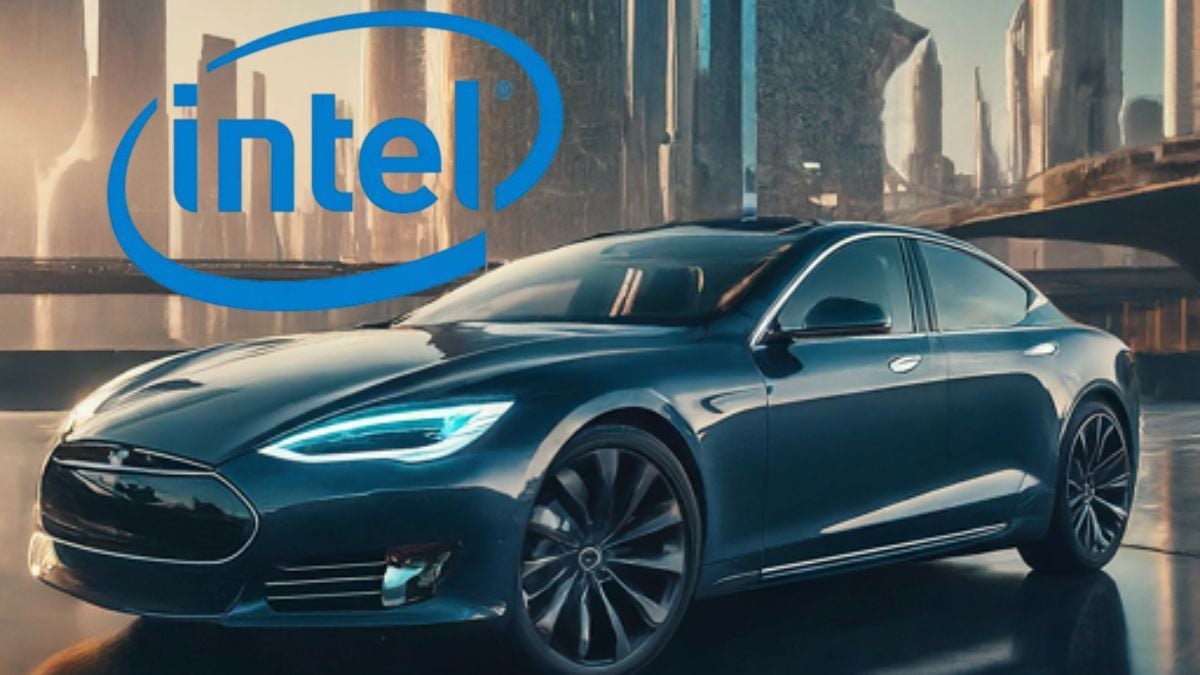Intel, last week, announced it is moving strategically into the automotive market with its most advanced discrete graphics system, ARC. NVIDIA has been in this segment for years and my own Audi E-Tron GT uses their graphics in the display and this capability does provide a far richer experience than the old mechanical gauges most of us grew up with.
However, Intel’s history in automotive hasn’t been that great, and, outside of Tesla, which was built more like a tech company than an automotive company, the tech industry and the automotive industry haven’t exactly been a walk in the park.
Let’s talk about some of the history here and we’ll conclude with what this means for the coming wave of electric and increasingly AI-driven cars of the future.
AutoPC
Intel’s first big Automotive effort was a project named AutoPC and it was done with Microsoft who thought cars could run on a version of Windows. I was the analyst of record for the launch which means I got one of the first AutoPC units which was marketed by Clarion, and it was a disaster. Sadly, I had to get a car that would take a third-party radio, so I bought for my wife a deep purple Chrysler Sebring, we called in the boat, which looked nice but didn’t really have enough power to get out of its own way and the AutoPC didn’t make the experience any better.
On paper it was amazing, it had built-in GPS, It had voice command, it even had an array microphone that actually worked when the top was down. But it was so slow the GPS system couldn’t keep up with the car, the voice command stuff was dubious, and the mistake was that Clarion had, to get the cost down to affordable levels (another mistake) underspecified the microprocessor. It reminded me a bit of cars in the 1970s when you could buy a car like a Trans Am, but you could only get an engine with around 180 HP, so it looked good, but performed like crap, and that was this radio. My wife was driving some kids one day and when the GPS system got confused, they started yelling “help me AutoPC you are our only hope.” And this was the last time my wife let me pick out or mess with her car.
Jaguar
Intel had a partnership with Jaguar, and I was one of the launch analysts for the I-Pace Jaguar’s first, and still only, electric. I’m also the moderator for the US I-Pace forum and one of the initial complaints about that car was that the Infotainment system was annoyingly slow to boot and use. In fact, the day after I got my car, it refused to boot at all resulting in the car being towed around 200 miles to the closest dealer to get fixed where some nimrod dry wiped the car down scratching the brand-new paint deeply.
What was sad was that Jaguar was also supposed to get Intel’s advanced headlight system that was computer driven and had the capability of erasing rain and snow (I saw this in the lab and it was like magic). But that system never came to market and Jaguar replaced the Intel technology with Qualcomm technology which worked far better.
Mobileye – And The Cars Of The Future
Intel however learned, and it took a while, that they needed to understand how cars were made and that understanding came with the acquisition of Mobileye back in 217 (which they recently divested) and they set up automotive labs and begin to, rather than just be a supplier, be co-developer of these more advanced technologies. You see this is what make Tesla different, Tesla understands better how to apply technology to cars because they build them, and Intel began, through their work with Mobileye to understand what made car companies different and this should make them far more successful this time than in prior effort.
As we move past the mistakes of the early electric cars, and into the future of autonomous electric cars that are less a blend of ICE and Electric technologies, the current electric cars are a bit of a mess, we should finally see the promise of faster advancement, the ability to update cars remotely far more successfully, far greater performance, and the promised massive increase in automotive safety.
And Intel isn’t alone either AMD, NVIDIA, and Qualcomm are all doing a far better job working with car makers than ever before. As a result, the electric cars you’ll see in the second half of the decade will be far more capable, far more dependable, and far more useful than the cars that preceded them.
China’s electric cars, the development of which was heavily funded by the Chinese Government, are an early indication of what is coming, though they are having serious quality problems (much like Tesla has experienced in the past) but they far cheaper, faster, have greater range than what we’ve yet seen out of the existing car companies including Tesla.
Rob Enderle is a technology analyst covering automotive technology and battery developments at Torque News. You can learn more about Rob on Wikipedia, and follow his articles on Forbes, on X, and Linkedin.





